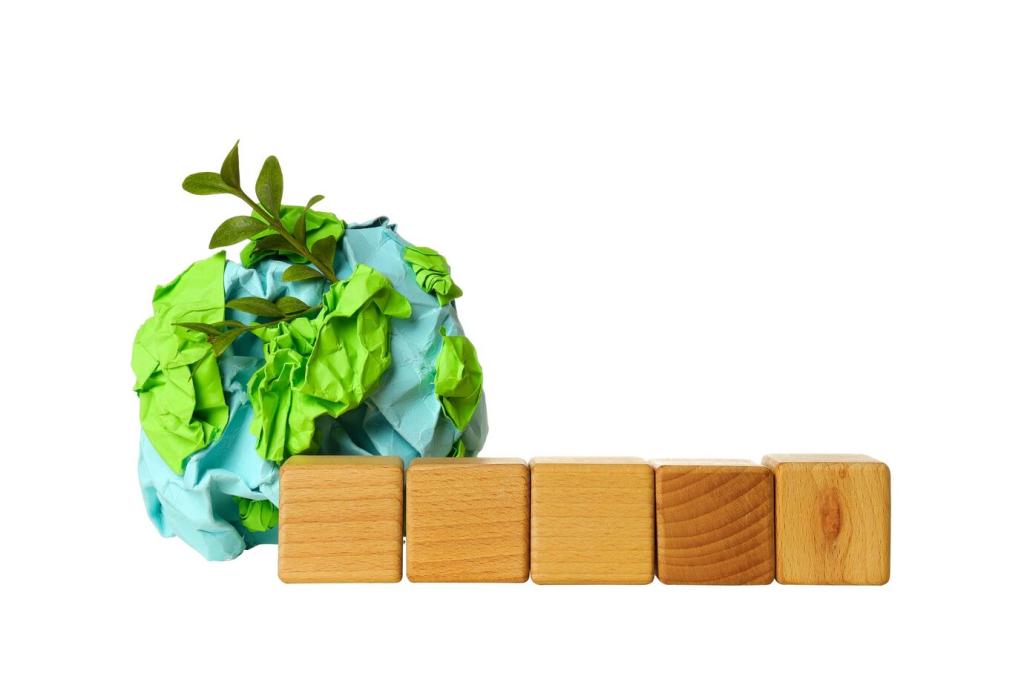Bring Out the Warmth: Natural Ingredients for Furniture Polish
The quiet science of plant oils
Plant oils and wax esters enter the microscopic valleys of wood, reducing dryness and refracting light for a warm glow. Unlike silicone sprays, they do not create a slick film; they nourish, then buff clean, revealing honest grain and depth.
Waxes that protect without plastics
Beeswax, carnauba, and candelilla form breathable, protective micro-layers that resist fingerprints and moisture. They add gentle sheen without sealing your furniture under a synthetic skin, so you can refresh, repair, and re-buff instead of stripping finishes.
A dresser that kept its story
A neighbor once rescued a maple dresser from a moving sale, dull and dusty. After a slow beeswax rub, the bird’s‑eye figure lifted like ripples in water. The finish felt alive, and she swears the drawers now glide smoother than ever.
Jojoba oil: the stable imposter
Technically a liquid wax, jojoba resists rancidity and stays clear, making it ideal for polishes you might store a while. It buffs to a silky, non-greasy finish and plays beautifully with beeswax for a forgiving, beginner-friendly paste.
Tung oil: depth and durability
Pressed from tung seeds, this classic drying oil polymerizes as it cures, emphasizing grain and adding water resistance. Use thin coats, let cure fully, then maintain with a lighter polish. It is a patient ingredient, but the glow rewards you.
Olive and walnut: kitchen companions with caveats
Olive oil offers quick richness but should be used sparingly and refreshed often. Walnut adds elegance but demands nut-allergy caution. Both benefit from vitamin E as an antioxidant, and both love a final buff with a clean cotton cloth.


Ingredient Spotlight: Waxes with Purpose
Beeswax melts smoothly and polishes to a cozy, amber warmth. It fills tiny scratches, softens edges of wear, and smells faintly of honey. Pair it with jojoba for a balm that spreads evenly and wipes clean without sticky residue.
Ingredient Spotlight: Waxes with Purpose
Carnauba is a very hard leaf wax that adds scuff resistance and a crisper shine. Blend small portions into beeswax balms for tabletops and chair arms. A little goes far, delivering a bright, resilient finish after a vigorous hand-buff.
Cleansers and Scent: Citrus, Vinegar, and Herbs
White vinegar: gentle cut for everyday grime
Diluted white vinegar helps dissolve fingerprints and kitchen haze on sealed wood. Mist onto a cloth, not the surface, and always test first. Avoid stone, shellac, and wax-only finishes; for those, use a dry buff or soap as needed.


Lemon and orange essential oils: scent and solvency
Citrus oils brighten scent and loosen greasy residue. A few drops in your polish can lift haze and leave a cheerful note. Use sparingly, avoid direct sun until buffed, and confirm compatibility with your existing finish on a discreet spot.
Simple Recipes to Try Today
Shake 2 parts olive oil with 1 part white vinegar and three drops lemon oil. Mist onto a cloth and wipe lightly. Buff dry with a second cloth. Make small batches, refrigerate, and discard if the scent turns even slightly off.
Melt 1 part grated beeswax with 3 parts jojoba in a double boiler. Remove heat, add five drops lavender, pour into tins, and cool. Rub sparingly, let haze, then buff. Readers love this on oak sideboards and timeworn pine drawers.
Blend 1 part carnauba, 4 parts beeswax, and 8 parts walnut oil; melt, stir, and cool to a scoopable paste. Add a whisper of orange oil. Apply thinly, wait five minutes, and buff enthusiastically. Note nut allergies before use.

Application and Care for Lasting Shine
Use soft cotton or microfiber and work with the grain. Apply the thinnest possible coat, let it set briefly, then buff until your cloth slides easily. Two light passes outshine one heavy coat and stay cleaner between dustings.

Sustainability and Community
Look for local beekeepers, certified carnauba, and transparent small presses for tung or jojoba. Buying seasonally and close to home reduces transport impact and supports craftspeople who steward landscapes—and the traditions behind your polish.
Sustainability and Community
Reuse glass spice jars for tins, cut retired T‑shirts into buffing cloths, and keep a small grater for wax. Save citrus peels for infusions, and track recipes in a notebook so you can repeat favorites without leftover odds and ends.
Sustainability and Community
What natural ingredient changed your polishing routine? Share a photo, drop your ratios, and tell us the wood species. Subscribe for seasonal formulas, ingredient deep dives, and reader challenges where we test community recipes side by side.
